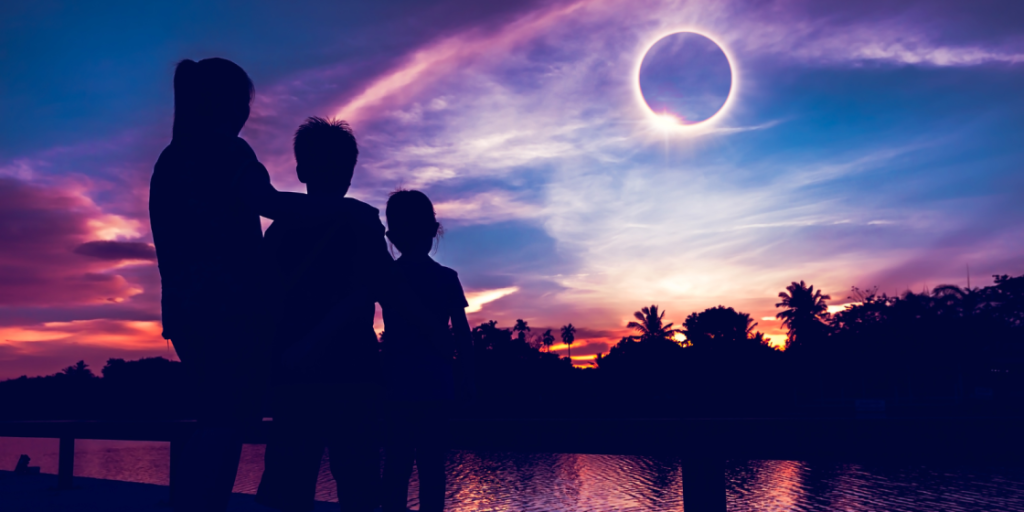Home / Blog / Days of the year / Mark Your Calendars: An Epic Total Eclipse Heads To North America!
Mark Your Calendars: An Epic Total Eclipse Heads To North America!
Date posted: 18th January 2024 in Days of the year
Last updated: 24th January 2024

We're just a few months away from witnessing a celestial spectacle – a total solar eclipse! This cosmic event, scheduled for April 8, 2024, will see the moon completely block the sun, plunging parts of the continent into a breathtaking twilight for several minutes.
But before we get swept away by the impending darkness, let's delve into some fun facts about this astronomical phenomenon:
- This eclipse will trace a path across 14 states, from Texas to Maine, earning it the nickname "The Great American Eclipse."
- During totality, the sun's pearly white corona, usually hidden by the it's bright light, will be visible for a few brief moments. This ethereal halo is composed of superheated plasma and offers a glimpse into the sun's outer atmosphere.
- Animals, from birds to insects, often exhibit unusual behavior during eclipses, with some even going to sleep prematurely. Scientists believe this is due to the sudden change in light and temperature.
- During totality, you might catch a glimpse of tiny, shimmering points of light called Baily's beads. These are formed when sunlight peeks through valleys on the moon's edge, creating a breathtaking diamond necklace effect around the lunar silhouette.
- Total solar eclipses are relatively rare occurrences, with any specific location experiencing them only once in every few centuries.
- The next total solar eclipse visible from the United States won't occur until August 23, 2044. So, make the most of this one!
Tips for a safe and memorable eclipse viewing:
- Never look directly at the sun, even during a partial eclipse, without proper eye protection. Why not customise your own here?
- Find a safe viewing spot. Remember, millions will be vying for the best view, so plan ahead and choose a location with good visibility.
- Embrace the experience. Put down your phones and cameras for a few minutes and simply enjoy the awe-inspiring spectacle unfolding before your eyes.
So, mark your calendars, gather your eclipse gear, and get ready for an unforgettable experience!

Strengthen your brand perception with promotional products
Chat online or call us today on 1800-586-1615
More Articles

Say Thank You With Branded Promotional Gifts
13th November 2018 in Days of the year

NATIONAL DO SOMETHING NICE DAY
5th October 2018 in Days of the year

Sweet Treats For Your Customers This Easter
20th February 2019 in Days of the year

Branded Products For National Oregon Day
8th March 2019 in Days of the year